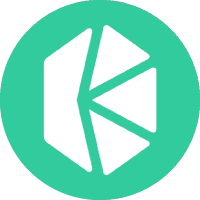Blum Procenter Drilling Machine Price Insights in Crypto

Concept Introduction
Cryptocurrency and blockchain industries often borrow terminology from traditional sectors to describe innovative financial mechanisms or digital products. One such term is "Blum Procenter Drilling Machine Price". While it originally denotes the market price of specific industrial equipment, within the crypto and financial tech ecosystem, it can serve as a metaphor or reference point for dynamic asset pricing models, tokenization strategies, and DeFi (Decentralized Finance) development.
This article unlocks the nuanced interpretation of "Blum Procenter Drilling Machine Price" in digital finance, illustrating its application, historical relevance, mechanism, and the potential advantages to investors, traders, and ecosystem developers.
Historical Background or Origin
In traditional supply chains, the Blum Procenter Drilling Machine facilitated efficient, precise hardware manufacturing, hinging on transparency of pricing due to its capital-intensive nature. As the blockchain world matured, analogies were drawn with high-value, precision-engineered tools to illustrate complex tokenized assets, real-world asset (RWA) pricing, and liquidity solutions.
Historically, digital asset marketplaces struggled to create reliable value references for niche or unusual tokenized assets. With the rise of DeFi and NFTs (Non-Fungible Tokens), projects began using robust, transparent, and traceable pricing mechanisms. The 'drilling machine price' shorthand refers to a model where the price of assets is determined based on real-time, verifiable supply and demand data, influenced by both historical and current market performance.
Platforms emulating this model started to refer to advanced pricing algorithms as 'Blum Procenter Drilling Machine Price Models'—connoting precision, reliability, and transparency, much like the hardware itself in the real world market.
Working Mechanism
1. Tokenization of Real-World Assets
Just as a Blum Procenter drilling machine carries a specific market value in hardware marketplaces, tokenized representations of industrial assets (RWAs) need accurate, tamper-resistant pricing in blockchain marketplaces. These digital tokens stand for physical assets (like industrial equipment, art, or real estate), and their market value mirrors real-world prices, validated and automated via smart contracts.
2. Pricing Oracles and Smart Contracts
Blockchain-based asset markets rely on pricing oracles—specialized data feeds that aggregate price information from multiple sources to keep digital asset values consistent with the real world. The 'machine price' model emphasizes:
-
Real-time Data Feeds: Oracles provide immediate information on anchor assets, reflecting real-time supply/demand.
-
Transparent Calculation: Algorithms disclose calculation methodologies, much like spec sheets for industrial tools, ensuring users trust the process.
-
Immutable Records: Every price update is recorded on-chain, creating a transparent history similar to maintenance logs for high-value machines.
3. Market-Driven Price Discovery
On decentralized marketplaces, buyers and sellers interact directly, with prices floating according to market sentiment, just like the fluctuating costs of coveted equipment. The digital equivalent of the 'Blum Procenter Drilling Machine Price' is set through active bidding, offer matching, and automated market makers (AMMs) that ensure liquidity and fair price formation.
4. Integration with DeFi Platforms
DeFi protocols often use these precise pricing strategies to facilitate token swaps, lending, borrowing, and collateralization. For example, a peer-to-peer loan secured by a tokenized industrial asset can have its value determined by the latest verified 'drilling machine price' on the blockchain. This helps ensure fair and stable financial arrangements.
Benefits or Advantages
The adoption of accurate, machinery-inspired pricing models brings significant benefits to blockchain and crypto markets:
1. Enhanced Transparency
All pricing calculations are recorded publicly on-chain, providing an audit trail similar to a machine’s documented maintenance and performance logs.
2. Lower Risk of Manipulation
Smart contract algorithms and external oracles work in tandem to prevent price distortion or manipulation—key for large-scale DeFi projects or real-world asset tokenization.
3. Fair Value Realization
Just as buyers and sellers in traditional markets would reference the precise market value of a Blum Procenter drilling machine before transacting, blockchain users base decisions on transparent, decentralized pricing, reducing the risk of overpayment or undervaluation.
4. Accessibility for Institutional and Retail Investors
Tokenization lowers the barriers to entry: even small-scale investors can take fractional ownership in high-value assets, aided by reliable, real-time price information.
5. Efficiency in Collateralization and Settlements
Efficient digital price discovery allows smart contracts to rapidly process loans, trades, or insurance payouts based on up-to-date asset values, akin to instant quotes in machinery procurement.
Conclusion or Future Outlook
The emergence of digital analogs to physical asset pricing, exemplified as the 'Blum Procenter Drilling Machine Price,' signifies a new era for precision in DeFi and asset tokenization. Financial engineers are increasingly referencing established pricing models from industrial markets to guide the design and execution of blockchain protocols, fostering greater trust and efficiency in digital asset trading.
As new protocols and exchanges continue to cultivate a need for transparency and accuracy in asset valuation, platforms such as Bitget Exchange are rising in prominence due to their robust infrastructure and standards of security. Similarly, users seeking to store or transfer digital assets securely are turning to solutions like Bitget Wallet for non-custodial, user-friendly management.
For traders, investors, and innovators in the digital asset space, understanding and adopting these high-precision value models opens doors to safer, fairer, and more adaptable financial products. As tokenization and DeFi applications continue their rapid evolution, real-world-inspired pricing mechanisms will play a pivotal role in shaping the next wave of blockchain-based finance and global digital commerce.
Latest articles
See moreAbout author
I'm Emma Shah, a blockchain culture interpreter bridging English and Hindi. I can deeply analyze Polygon's scaling solutions and the economic models of on-chain games in English, while discussing the impact of India's cryptocurrency tax policies and grassroots innovations in Mumbai's blockchain communities in Hindi. Having worked on a decentralized storage project in Bangalore and studied the application of NFTs in art copyright in London, I'll guide you through the blockchain world where global and local perspectives intersect, uncovering diverse stories behind the technology.





















